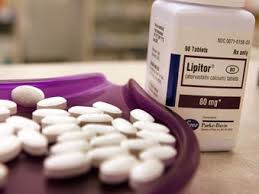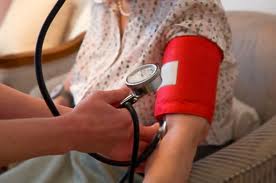Individuals prescribed statin therapy for high cholesterol levels have increased their caloric intake by nearly 10% and their intake of fat by 14% over a recent 10-year period, while no changes in eating habits have been observed among statin nonusers, a new study shows.
In addition, researchers report that individuals prescribed a statin had a larger increase in body-mass index (BMI) than those who weren’t taking the lipid-lowering medication.
Presenting their findings April 24, 2014 here at the Society of General Internal Medicine Meeting , the researchers say the study showed that statin users were consuming an extra 192 kcal per day in 2009–2010 than they were in 1999–2000, and this could have contributed to the increase in BMI, which was the equivalent of a 3- to 5-kg weight gain.
“Since the guideline recommends that patients should prevent weight gain, the observed increase in caloric intake and more rapid increase in BMI among statin users are of concern,” write Dr Takehiro Sugiyama (University of Tokyo, Japan) and colleagues in JAMA: Internal Medicine, where the study was published to coincide with the presentation. “According to the guidelines, people who receive statin therapy also should take steps to reduce fat intake, but we did not observe a pattern of combining statin use with dietary control.”
Dr Rita Redberg (University of California, San Francisco), the editor of JAMA: Internal Medicine, said she has treated many patients with statins over the years and has observed a “false reassurance” among those who receive the cholesterol-lowering medications. There is a perception, she writes, that “statins can compensate for poor dietary choices and a sedentary life.” The new data raise concerns of a potential hazard with statins, where the focus on “cholesterol levels can be distracting from the more beneficial focus on healthy lifestyle to reduce heart-disease risk,” suggests Redberg.
Using data from the National Health and Nutrition Examination Survey (NHANES), Sugiyama and colleagues examined the temporal trend in food intake among statin users and nonstatin users between 1999 and 2010. During this time period, the proportion of patients taking statins increased from 7.5% in 1999 to 16.5% in 2010. Statin users tended to be older, male, and white and have less education, a diagnosis of diabetes, and a higher BMI than their counterparts not taking statins.
In 1999–2000, statin users consumed 2000 kcal/day and ate 71.7 g/day of fat, both of which were significantly less than that consumed by individuals not taking statins. By 2009–2010, however, there was a significant increase in the number of calories consumed and the amount of fat eaten by statin users, whereas dietary habits were unchanged among those not taking the cholesterol-lowering medications. In 2009–2010, there was no significant difference in the amount of food consumed by statin users and nonusers, nor was there any difference in the amount of fat consumed. Similar findings were observed when the researchers restricted the analysis to saturated fat and cholesterol intake.
Regarding obesity, there was a 1.3-kg/m2 increase in BMI from 1999–2000 to 2009–2010 in the statin users and a 0.4-kg/m2 increase among statin nonusers.
Although the paper is limited by its cross-sectional design, Sugiyama and colleagues state that it is reasonable to conclude the average American treated with statins is eating more calories and more fat than the average American taking statins was doing a decade ago. At present, they can only speculate as to the reasons for this.
“One possibility is that statin use may have undermined the perceived need to follow dietary recommendations. Patients who recognized that their LDL-cholesterol levels were lowered drastically by statins may have lost the incentive to pursue dietary modifications,” write the researchers. “Physicians might have contributed to this process by shifting the focus of consultations from diet to statin regimen adherence once statin treatment had begun.”
Dr Mahesh Patel (Duke University School of Medicine, Durham, NC), who was not affiliated with the study, said the new analysis is interesting because it explores something that is rarely studied in medicine, that being the interaction between medication and lifestyle habits. However, he is cautious about making firm conclusions based on the data.
“It is tempting to conclude that patients prescribed statins adopted a more liberal diet than the individuals who were not taking the drugs, but the study only reflects population averages” and does not track the same patients over the 10-year period, he told heartwire .
Dr Sekar Kathiresan (Massachusetts General Hospital Heart Center, Boston) agreed with the need for caution. The analysis, which is based on a somewhat “sexy hypothesis,” tends to fit with people’s preconceived notions about the ill effects of medication use. The lament often heard is that people will simply abandon moderation when it comes to diet because they are now being treated with a statin.
“The flaw is that this is a nonrandomized, observational study, and the statin use might simply be marking a subset of patients who ate more over a 10-year period,” Kathiresan told heartwire . As such, the observational nature of the NHANES analysis makes it impossible to imply causality, whereby taking a statin had the unintended effect of people eating more. Like Patel, Kathiresan noted that the researchers did not follow the same group of patients from 1999 to 2010, a major limitation of the data.
Previous studies have shown that the use of statins is associated with a modestly increased risk of diabetes. Kathiresan said that an increased BMI might be one of the possible reasons for this association but again urged restraint about reading too much into the data.
Both Patel and Kathiresan agreed that physicians need to be vigilant in getting patients to understand their risk factors. To heartwire , Patel said that patients should be reminded “they are not off the hook because they’re on a statin and their LDL-cholesterol levels are better” and that physicians should not “let off the gas” once their patients are treated with a moderate- or high-dose statin as recommended by the clinical guidelines.
Source: Medscape


